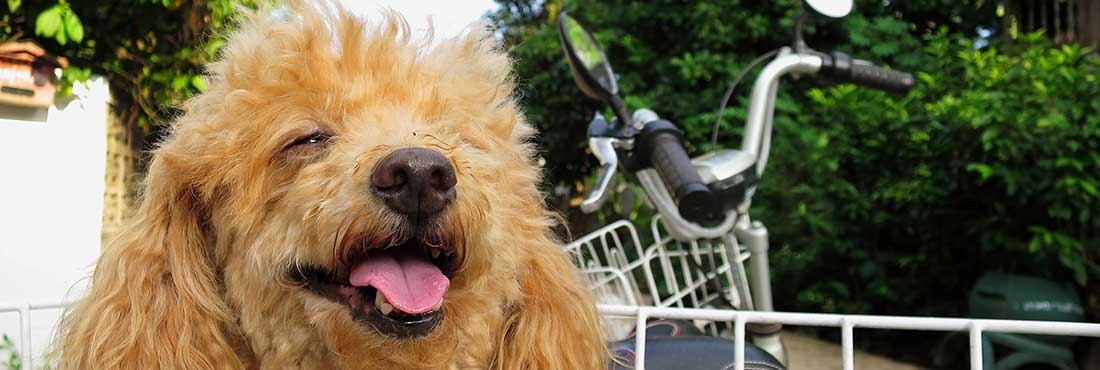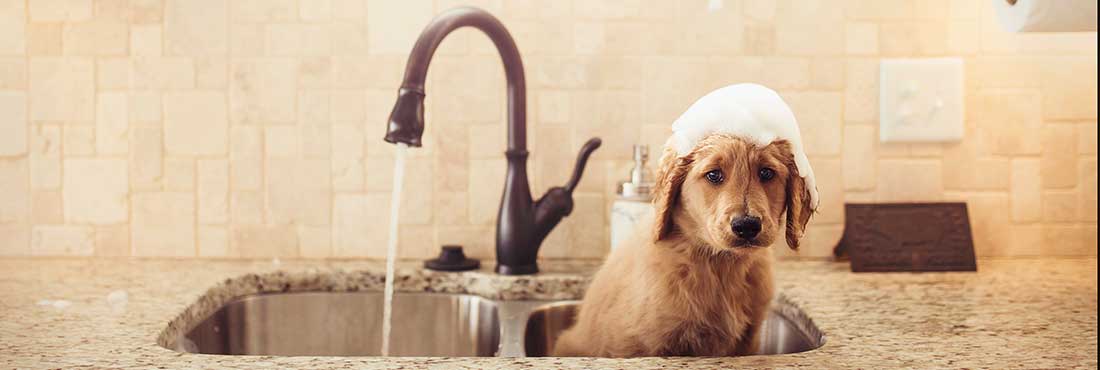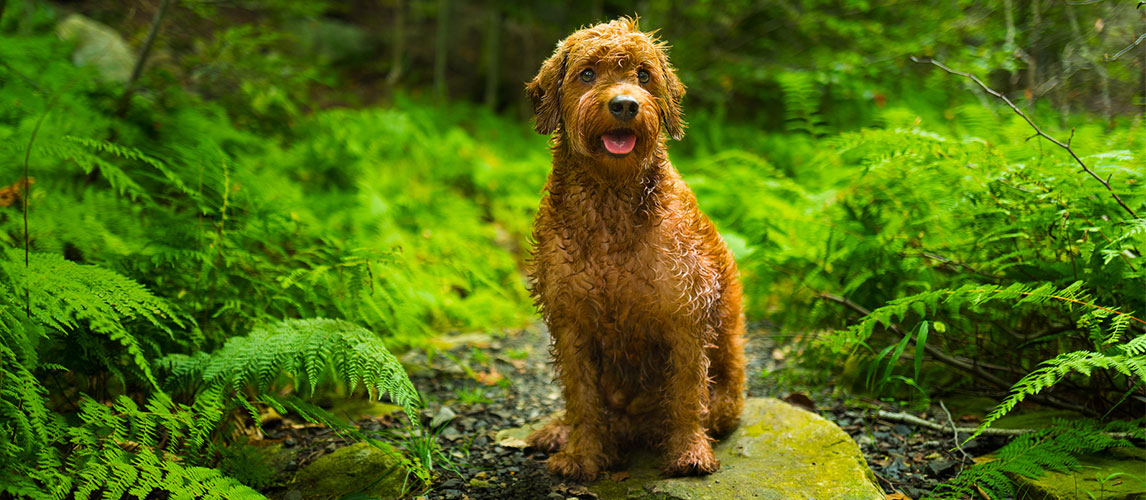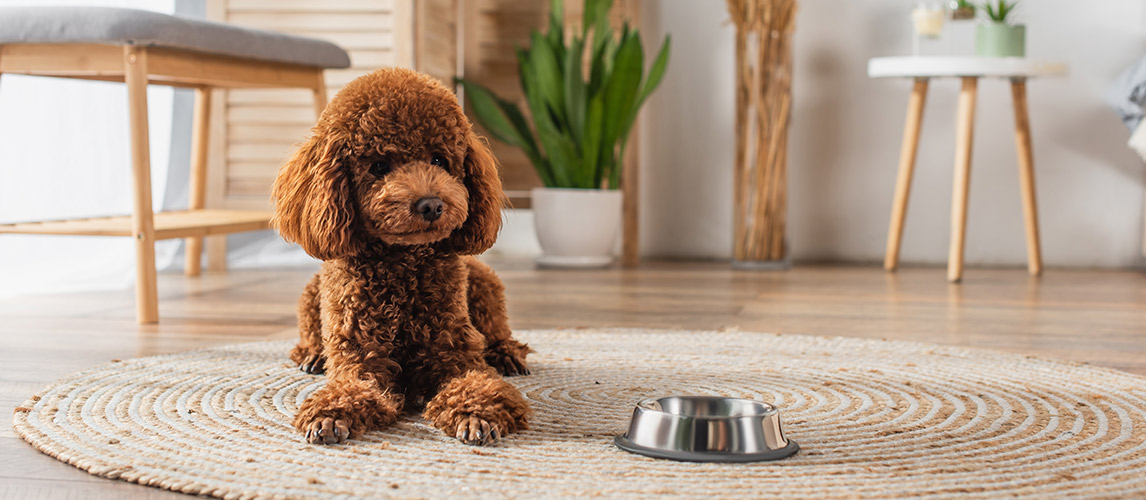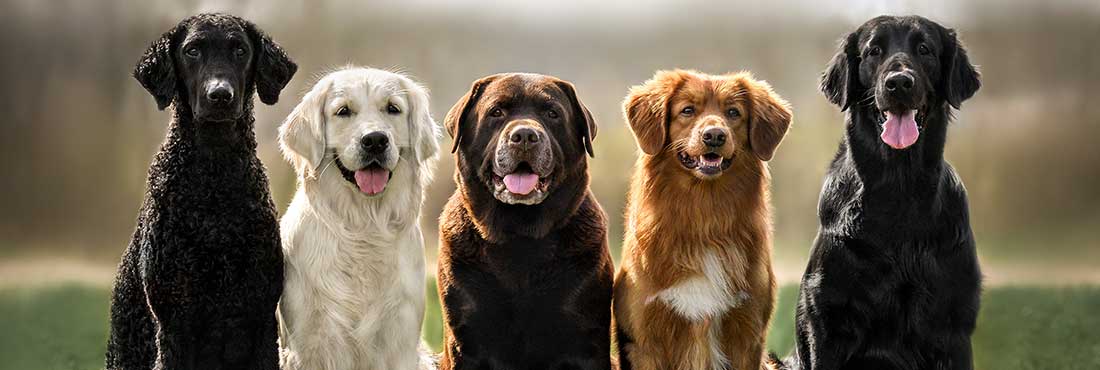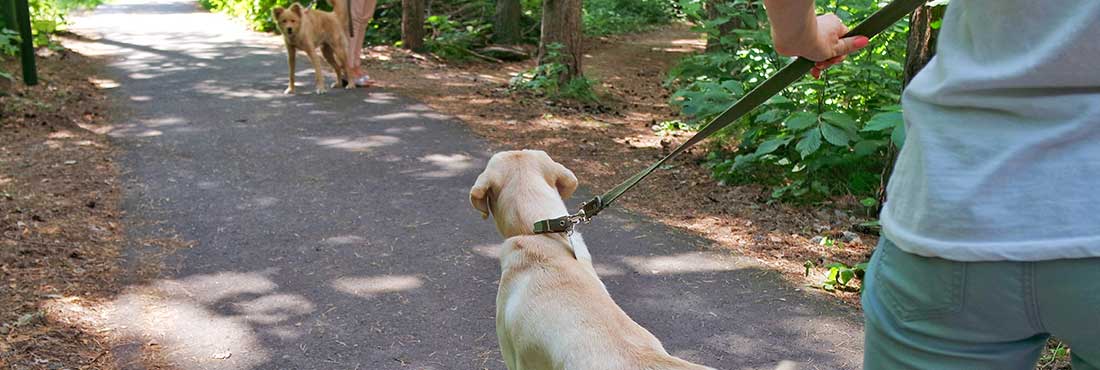Goldendoodle dogs are very popular with dog lovers looking for a designer dog with a naturally playful nature and cute appearance. There’s something undeniably irresistible about these dogs that closely resemble teddy bears with their curly coat!
There are many different varieties of Goldendoodles, and this article will focus on the F1 Goldendoodle and F1B Goldendoodle. We will examine the differences between these breeds, explain the numbers, and discuss which dog is best for families with severe allergies.
Read on to find out what makes these two types of dogs so different…
F1 vs. F1B Goldendoodle Comparision
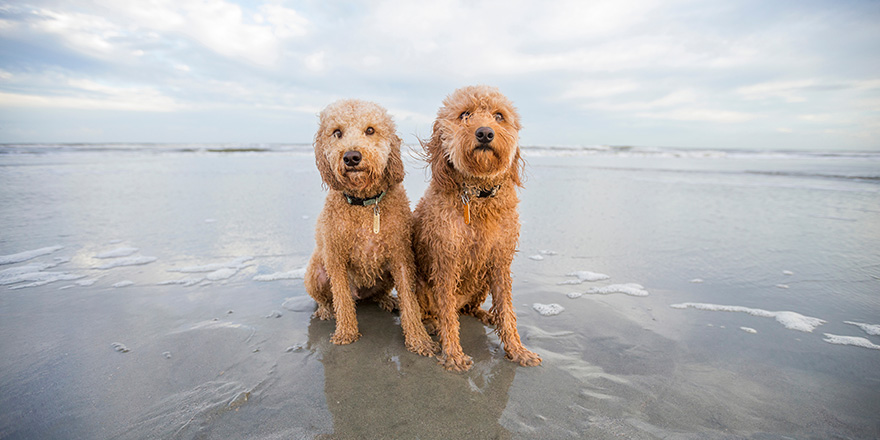
If you have searched for Goldendoodles online, you will likely come across dog breeders advertising the acronyms “F1” and “F1B”; this can be confusing if you are unfamiliar with the terms.
So let’s break it down and simplify it…
What Does the “F” Mean When Looking at an “F1B Goldendoodle” Dog?
The “F” that you often see before the term Goldendoodle refers to filial, meaning that the dog is a crossbred dog, not a purebred dog. Golden Doodles are dogs that have been crossbred with a Golden Retriever and Poodle.
All Goldendoodles will have an “F” in their name, and the “1” refers to the Goldendoodle puppy being first generation offspring from a purebred Golden Retriever and a purebred Poodle.
Although similar, these hybrid dogs do have noticeable differences – so what is the difference between an F1 Goldendoodle and an F1B Goldendoodle?
What is an F1 Goldendoodle?
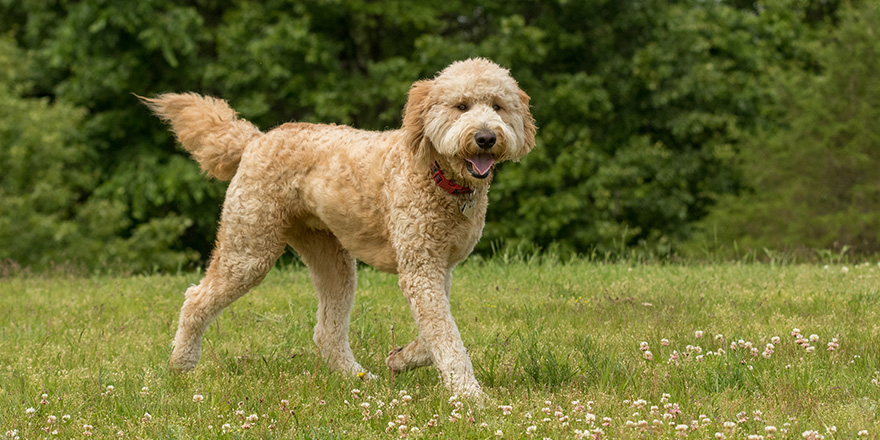
An F1 Goldendoodle is a purer mix as it has been crossed with a purebred Golden Retriever and a purebred Poodle. The genetic makeup is 50% Poodle and 50% Golden Retriever genes. However, this doesn’t guarantee a certain look or personality, as all hybrid dogs tend to adopt traits from the more dominant purebred parent. For example, an F1 Goldendoodle with more dominant Poodle genes will likely have a shorter curly coat and would therefore make a better hypoallergenic dog choice for allergy sufferers.
F1 Goldendoodle dogs tend to be popular because they carry the hybrid vigor trait, which means that they are generally healthier than purebred dogs.
The hybrid vigor trait is something we will talk about more when we look at the health of F1 vs. F1B Goldendoodle dogs.
What is an F1B Goldendoodle?
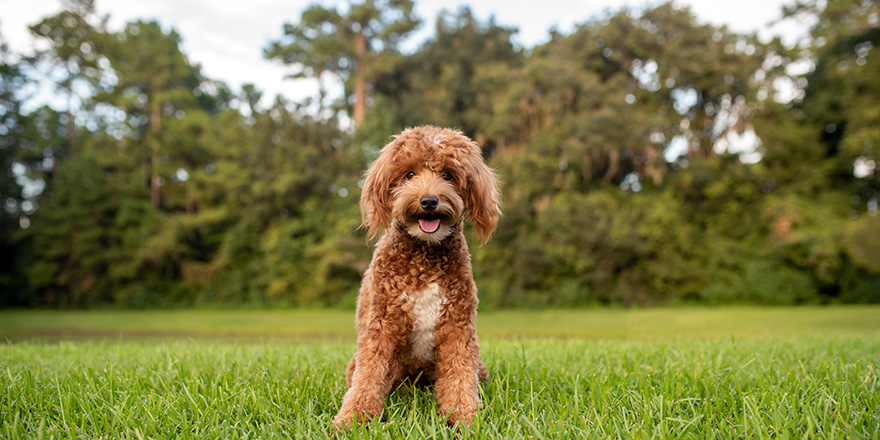
Now that you know what the “F” and “1” stands for in the dog acronym, we will now look at the “B”.
What Does the “B” Stand for with F1B Goldendoodle Dogs?
The “B” that you see in F1B Goldendoodles stands for backcross, where the original hybrid crossbreed dog has been bred back with purebred parent dogs – typically a purebred Poodle. This will normally result in a dog that is 75% Poodle and 25% Golden Retriever. Purebred Poodles are normally always used over a Golden Retriever parent for breeding with F1 Goldendoodles as this generally creates a dog with a hypoallergenic coat that doesn’t shed as much as a purebred Golden Retriever.
If you are thinking of getting an F1B Goldendoodle and looking for a hypoallergenic dog, then always speak to a reputable breeder who will confirm the purebred parent breed. A Poodle parent will always be preferential as they produce a shorter coat type.
F1 vs. F1b Goldendoodle Comparison Chart
| Features | F1 Goldendoodle | F1B Goldendoodle |
|---|---|---|
| Coat Type | Straight, curly or wavy | Wavy or curly |
| Genetics | 50% Golden retriever, 50% poodle | 75% poodle, 25% golden retriever |
| Hypoallergenic | Dependent on various factors | Yes |
| Hybrid Vigor | Yes | Less hybrid vigor trait |
Goldendoodle F1B vs. F1 Temperament
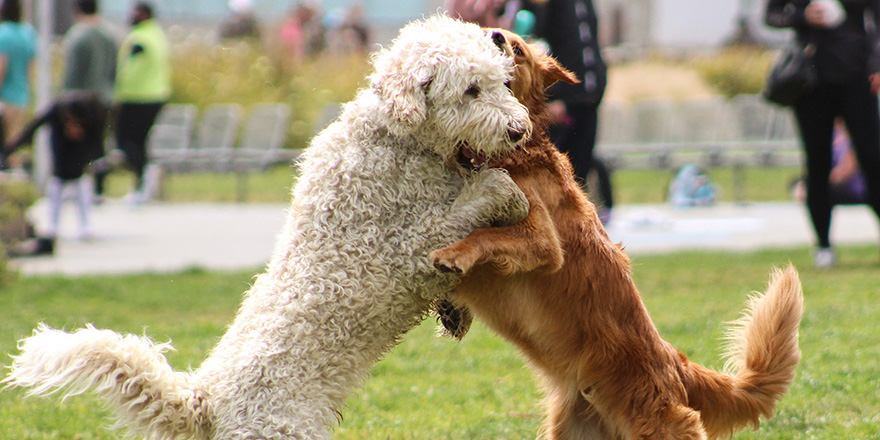
The F1B Goldendoodle and F1 Goldendoodle are well known for being playful dogs with friendly personalities. Their unique genetic makeup means they get their loyal, family-friendly trait from their Golden Retriever genes and their intelligence from the Poodle parent.
Both F1 Goldendoodles and F1B Goldendoodles are lively dogs that can be quite hyperactive, so potential owners looking for a calm dog will probably not be well-suited to this breed.
Generally speaking, the F1B Goldendoodle is more intelligent than the F1 Goldendoodle as it has a larger percentage of Poodle genes and the Poodle breed is well known for its intelligence.
Either way, this half Poodle, a half Golden Retriever, is easy to train and loves to please its owners. So with patience and care, the F1 Goldendoodle or F1B Goldendoodle are fantastic dogs that make great pets.
F1b vs. F1 Goldendoodle – Which is Healthier?
When discussing the health of an F1 Goldendoodle or F1B Goldendoodle, it’s important to mention the hybrid vigor trait.
What is Hybrid Vigor?
Hybrid vigor is a trait that is said to occur when a dog is produced from two different inbred lines from two purebred parents. Purebred dogs can carry genetic diseases, so the theory is that by taking two purebred dogs with genetic makeup, you can produce healthier, more vigorous descendants with fewer genetic diseases and health issues. This is because the inbreeding of purebred dogs can allow identical genetic defects to pass down through the generations.
The F1 Goldendoodle dog is a mixed breed dog, so it could potentially inherit genetic disorders from two separate breeds. The hybrid vigor of these dogs is high, which generally means they are healthier and live longer than purebred dogs.
The F1B Goldendoodle carries less hybrid vigor trait because they are technically second generation-crosses and could potentially develop more health problems.
F1 Goldendoodle vs. F1B Goldennoodle Appearance
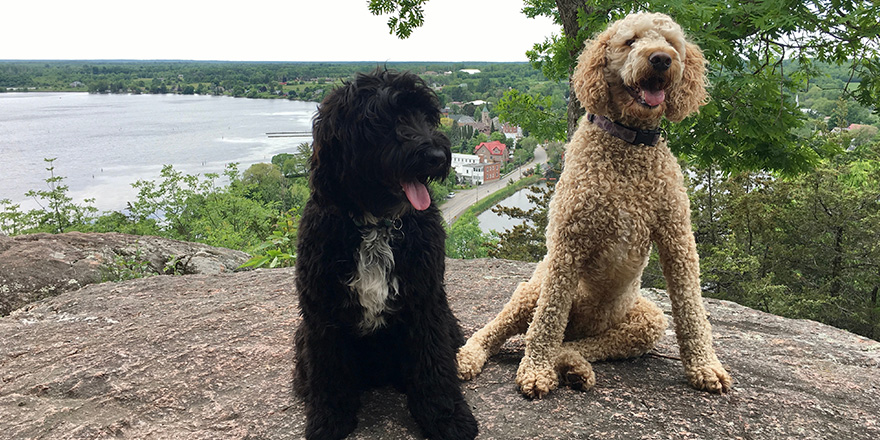
Although there are similarities between the F1 Goldendoodle and F1B Goldendoodle, these dogs are slightly different in appearance despite their curly coats.
Let’s look at the differences between an F1 Goldendoodle and an F1B Goldendoodle…
F1 Goldendoodle Appearance
You might think that the F1 Goldendoodle would have a wavy or curly coat, and you would be 100% correct – but did you know that they can also have straight hair? Because the F1 Goldendoodle has a genetic makeup of 50% Poodle and 50% Golden Retriever, you can never fully predict the type of coat this dog will have as golden retrievers have straight hair and shed more.
The F Goldendoodle is normally around 50-70 lbs and standard in size.
The color of an F1 Goldendoodle can vary significantly: from chocolate, golden, red, apricot, white, black, merle, and gray.
You can also get smaller versions of this dog called F1 minis or a medium Goldendoodle. This occurs when Golden Retrievers are crossed with a toy or miniature Poodle. The average weight of these adult dogs is around 25-45 lbs.
F1b Goldendoodle Appearance
F1b Goldendoodles have wavy or curly hair and look more like their poodle parent. Due to the mix of their breeding, they will have approximately 75% Poodle genes and therefore share the Poodle’s coat, with tighter curls and a teddy bear appearance.
An F1B Goldendoodle usually grows to around 30-45 lbs and is usually golden in color. Other coat colors include black, red, gray, apricot, and copper.
Conclusion
Both F1 Goldendoodles and F1B Goldendoodles make excellent family pets. They look a little different, with F1B Goldendoodles generally having curlier hair and a more “poodle-like” appearance. Many people associate F1 Goldendoodles, especially F1B Goldendoodles, with teddy bears – so it’s easy to see why they’re a popular dog breed.
Always make sure you are buying from a reputable breeder with all the credentials and certificates, and don’t forget to ask questions regarding their parents from both the poodle and golden retriever side, as this may indicate how your pup will look and act as they mature.
Frequently Asked Questions
If you are reading this article, you might still wonder which type of Goldendoodle puppy is best for you and your family. So let's break it down to make it a little easier.
Firstly, the F1B Goldendoodle and F1 Goldendoodle breeds are fantastic family pets with lively personalities, bags of energy, and high intellect.
Both would be suitable if you're looking for a dog to learn tricks. However, the F1b will be more intelligent as they contain around 75% purebred Poodle genes, and Poodles are renowned for being super intelligent.
If you or your family members have mild allergies, then you'll want to opt for an F1b as these dogs have a hypoallergenic coat, and while you can never guarantee non-shedding coats, these are most definitely a low shedding breed with a tight curly coat type.
F1B Goldendoodle dogs are more expensive than F1 Goldendoodle dogs due to their hypoallergenic coat and the fact that they are more difficult to breed.
If you are looking for a less expensive option and do not have dog allergies, then an F1 Goldendoodle might be a better option as not only are they cheaper to buy, but they carry more of the hybrid vigor trait too, which means that they will be less likely to pick up generational diseases and health problems, which may decrease your vet bills and insurance.
When looking at a Goldendoodle puppy and average prices, an F1 Goldendoodle will always come up slightly cheaper and can cost anything up to $2000.
F1B Goldendoodle puppies can cost up to $2500. As we mentioned, these dogs are more expensive because of their non-shedding (or low shedding) abilities.
Most breeders and dog owners tend to gravitate towards the F1B Goldendoodle dog because these non-shedding dogs are perfect for people with allergies. The F1B is 75% poodle, so not only is this dog more intelligent and hypoallergenic, but they also tend to have very cute teddy bear features.
When choosing a new four-legged friend for the home, many dog owners like to factor in potential health issues from the parent breeds. F1 Goldendoodle dogs carry hybrid vigor, a trait that occurs when a dog is bred from two different purebred parent breeds. This minimizes inbred genetic health issues, and diseases passed down through generations. Simply put, the hybrid vigor creates healthier dogs.
The F1B Goldendoodle carries a smaller percentage of this trait as they are seen as second-generation crosses. This doesn't mean that they are not healthy dogs. However, it simply means that they aren't necessarily as healthy as F1 Goldendoodle dogs.
There are certain health problems that Ff1B Goldendoodles can suffer from, which include: hip dysplasia, skin conditions, eyes diseases, and heart problems, and while conditions such as hip dysplasia aren't preventable, you can make sure that you buy your dog from a reputable breeder who can give you information regarding the dog's parents and their health.
This might come as a surprise, but no dog is 100% hypoallergenic. All dogs shed fur, and none are 100% 'non-shedding,' but there are certain dogs that you can buy that shed much less and trigger fewer allergic reactions for allergy sufferers.
F1 Goldendoodle dogs are quite hypoallergenic but not as hypoallergenic as F1B Goldendoodle dogs.
If you only have mild allergies and dog hair won't trigger a strong reaction, then an f1 Goldendoodle might be ok. These dogs are half Golden Retrievers with a straight, curly, or wavy coat, so they can still shed a fair bit of hair.
Those with dog allergies would be better off with a low shedding f1b Goldendoodle with a hypoallergenic coat. These hypoallergenic dogs are 75% poodle so tend to have shorter, tighter curly hair that doesn't tend to shed.
To understand the makeup of a Goldendoodle then, we need to look at their purebred parents. To create an F1 Goldendoodle dog, Goldendoodle breeders cross a purebred Golden Retriever with a Poodle. This means that the coat type of an F1 Goldendoodle is relatively unpredictable - they can have a wavy coat, curly hair, or straight hair.
Both F1 Goldendoodles and F1b Goldendoodles are low shedding dogs but when it comes to favorite dog breeds for people with allergies, then F1B Goldendoodle dogs are always the preferred choice.
These dog breeds are usually 75% Poodle and 25% Golden Retriever so they have a more dominant Poodle gene making their fur shorter and curlier. Whilst F1B Goldendoodles are not 'non-shedding', they are very low shedding dogs and are a popular choice for those with allergies.
The black Goldendoodle dog is the most popular type of Doodle in the US, and this is because they are quite rare. Both F1 Goldendoodle dogs and F1B Goldendoodles are usually cream, chocolate, or golden and rarely in black.
If a Goldendoodle is bred in the second or third generation, there is a slightly increased chance that the dog may be black. If an F1B Goldendoodle parent dog is bred with a black Poodle, then the generation offspring will likely become black.
You should expect to pay more for a black Goldendoodle because the color genetics can be difficult to reproduce.
There are lots of different factors to take into consideration when looking at the perfect family dog. If you have decided that a goldendoodle is your number one choice over any other dogs then let's look at why they make good family pets and look at f1 vs f1b....
Personality
In a way, you are taking a bigger risk by purchasing an f1 goldendoodle.
Let's explain why...
Basically, an f1 goldendoodle carries an equal mix of genes that are 50% golden retriever and 50% poodle. These dogs have very different personalities and so it is difficult to say whether your dog will have more of a dominant poodle personality (which is generally highly-intelligent, playful and fun) or a golden retriever personality (which is also fun and playful, but less intelligent and more goofy!). Either way, you will get a dog that is eager-to-please and friendly and loyal.
F1b goldendoodles are 75% poodle and 25% golden retriever, and therefore you can expect them to be a little smarter but still super friendly and playful all the same.
Health
Both f1 goldendoodles and f1b goldendoodle dogs carry the hybrid vigor trait that we mentioned above in the health section. This means that they are less likely to develop generational diseases. The f1 goldendoodle carries a higher percentage of this trait so if you're looking for a dog that may lead a healthier life and therefore live longer then the f1 goldendoodle might be a better choice.
Hypoallergenic
F1 goldendoodles carry a larger percentage of the golden retriever gene and therefore have longer hair and shed more. The f1b goldendoodle is a hypoallergenic dog, so if you have a family member with a dog allergy then this is better choice by far.
Cost
F1b goldendoodles cost more because of their hypoallergenic coat.
Conclusion
Both f1 goldendoodles and f1b goldendoodles make excellent family pets. They look a little different, with f1b goldendoodles generally having curlier hair and a more "poodle-like" appearance. In fact, many people associate f1 goldendoodles and especially f1b goldendoodles with teddy bears - so it's easy to see why they're a popular dog breed.
Always make sure that you are buying from a reputable breeder with all the credentials and certificates and don't forget to ask questions regarding their parents from both the poodle and golden retriever side as this may give an indication how your pup will look and act as they mature.


